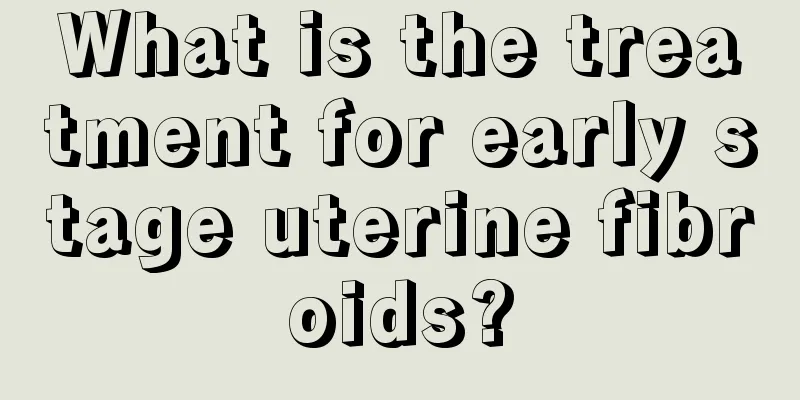What is the treatment for early stage uterine fibroids?

|
Clinically, most diseases can be effectively cured if treated in the early stages, and uterine fibroids are no exception. For patients with uterine fibroids, how to accurately find a treatment method suitable for their disease in the early stages also requires them to have a prior understanding of the commonly used treatment methods for uterine fibroids in the early stages, so that they can make better decisions when making choices. 1. Follow-up observation If the patient has no obvious symptoms and no signs of malignancy, regular follow-up observation can be performed. 2. Medication (1) Gonadotropin-releasing hormone agonists (GnRH-a) Currently, the commonly used GnRH-a in clinical practice include leuprorelin (Enanton), goserelin (Zoleide), triptorelin (Dapiga), etc. GnRH-a should not be used continuously for a long time. It is only used for pretreatment before surgery, generally for 3 to 6 months, to avoid causing severe menopausal symptoms caused by low estrogen. A small dose of estrogen can also be supplemented at the same time to counteract this side effect. (2) Mifepristone is a progesterone antagonist that has been clinically tried in recent years to treat uterine fibroids. It can reduce the size of fibroids, but the fibroids often grow again after discontinuation of the drug. (3) Danazol is used for preoperative medication or treatment of uterine fibroids that are not suitable for surgery. Uterine fibroids may grow larger after medication is stopped. Danazol can cause liver damage and androgen-induced side effects (weight gain, acne, hoarse voice, etc.). (4) Tamoxifen can inhibit the growth of fibroids. However, long-term use may cause enlargement of uterine fibroids in some patients, and may even induce endometriosis and endometrial cancer, so this should be paid attention to. (5) Commonly used androgen drugs include methyltestosterone (methyltestosterone) and testosterone propionate (testosterone propionate), which can inhibit the growth of fibroids. The dosage should be used carefully to avoid virilization. During the bleeding period of patients with uterine fibroids, if the amount of bleeding is heavy, uterine contractants (such as oxytocin, ergot) and hemostatic drugs (such as hemostatic acid, aminobenzoic acid (hemostatic aromatic acid), lizhihemostasis, Panax notoginseng tablets, etc.) can also be used, which can play a certain degree of auxiliary hemostatic effect. In general, in the early stages of uterine fibroids, for patients whose condition is not particularly serious, the method of drug treatment and follow-up observation is more ideal. However, it should be noted that if patients with uterine fibroids find that their condition is not effectively controlled after using the above methods, they can use surgery and other methods for treatment. |
<<: What are the early symptoms of uterine fibroids?
>>: How should uterine fibroids be treated?
Recommend
Overeating has many harmful effects, 5 points to remember about diet
Many people who are trying to lose weight fall in...
Why is it called Huangguoshu Waterfall? Comparison between Huangguoshu Waterfall and Lushan Waterfall
Huangguoshu Scenic Area is famous at home and abr...
Will taking Chinese medicine delay menstruation?
Traditional Chinese medicine believes that an ear...
What should I pay attention to when I have pelvic effusion?
If a woman has pelvic effusion, in addition to re...
Quora: The gap that Q&A sites need to cross
Last month, Tawanda Sibanda and I decided to cond...
Will I lose weight when I have my period?
Women have their menstrual period once a month. S...
Wear high heels often, be careful of big toe valgus!
Many women prefer to wear high heels, which can s...
Can I get pregnant if I have sex with one ovulation test strip deep and one shallow?
We are in the preparation stage and pay much atte...
Super practical! A self-examination method for kidney health worth collecting
1. Observe the changes in urine color with your n...
We were chatting happily, why did we start arguing?
Produced by: Science Popularization China Produce...
What does the property fee include? Is it mandatory to pay the property fee?
In every community, there are properties. The pro...
Why do I bleed again a week after my period ends?
Why does bleeding occur again one week after the ...
How to get the flu vaccine this year? All your questions are here
As the hot summer passes and the weather gets coo...









